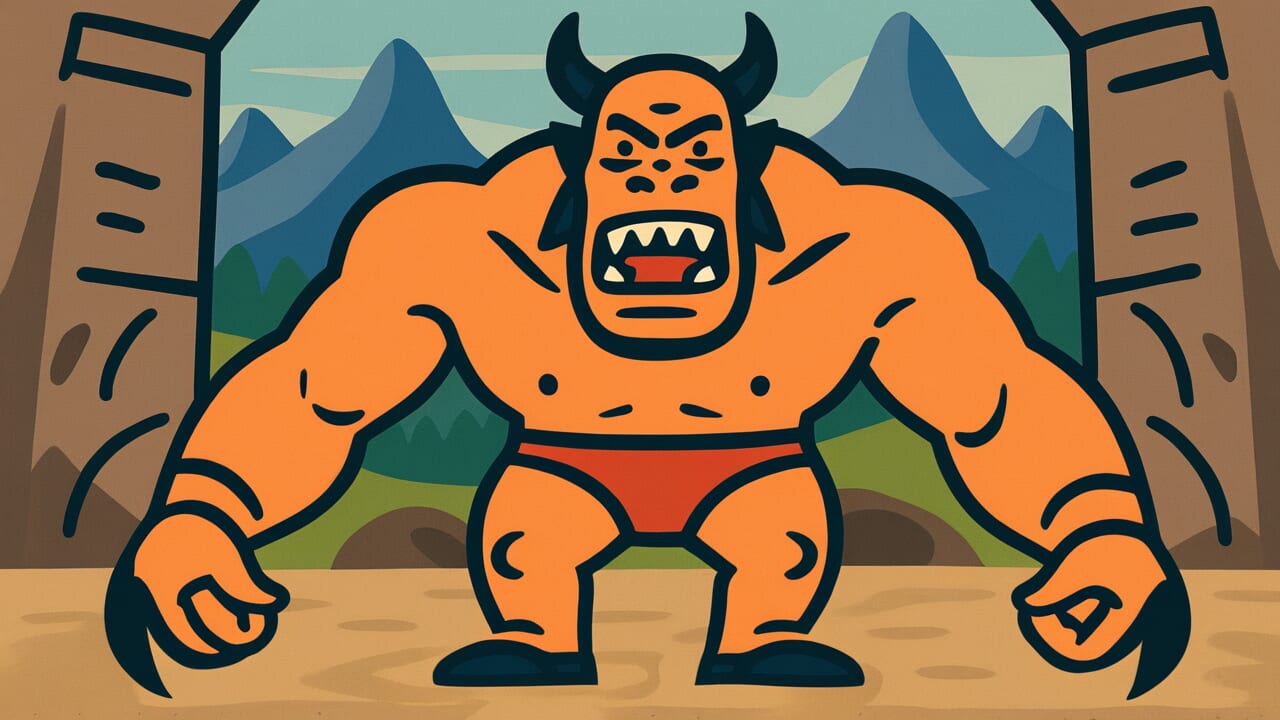How to Read “Even demons break their horns”
Oni mo tsuno oru
Meaning of “Even demons break their horns”
“Even demons break their horns” means that even the strongest beings sometimes weaken, and everyone eventually faces decline.
Since even demons, the ultimate symbol of strength, can break their horns that prove their power, humans certainly cannot avoid weakening.
People use this proverb when they see someone or something at their peak, or when they feel their own decline.
It applies when witnessing a powerful person’s fall, when an unbeatable athlete retires, or when a thriving company struggles.
Today, people understand it as expressing the impermanence of all things. Nothing lasts forever.
It serves as both a warning to those in strong positions and comfort to those feeling their decline.
The lesson is clear: strength is not eternal, so we should remain humble.
Origin and Etymology
No clear written records explain the origin of this proverb. However, we can make interesting observations from how the phrase is constructed.
In Japanese folklore, oni represent the strongest and most fearsome beings. Their horns are distinctive features that show their power and dignity.
The expression “breaking their horns” means losing the symbol of strength itself.
Breaking horns is not just an injury. It damages the very identity of being an oni.
The idea that even demons can lose their horns expresses a universal truth. No matter how mighty, no one’s power lasts forever.
This expression likely came from people observing the rise and fall of powerful leaders.
Our ancestors watched even the mightiest rulers eventually decline. They expressed this universal truth through the image of supernatural beings.
By using demons as the ultimate example of strength, they made the inevitable law of decline more memorable and impactful.
Usage Examples
- That major corporation once dominated the industry, but “even demons break their horns”—now it’s a shadow of its former self
- The grand champion who had no rivals in his prime is retiring—truly “even demons break their horns”
Universal Wisdom
“Even demons break their horns” has been passed down through generations because it captures two human emotions perfectly.
These are our longing for strength and our fear of its fragility.
We admire strength. We envy powerful people and wish to become like them.
But deep down, we know that strength never lasts forever.
Looking back at history, every hero and every dynasty eventually came to an end.
Our ancestors expressed this unavoidable truth through the striking image of even the mightiest demon’s horns breaking.
This proverb contains wisdom that encourages human humility.
Those at the top must remember that decline will come someday. Those feeling their decline should know it’s natural, and even the once-mighty follow the same path.
Thinking deeper, this shows a truth: everyone is equal before time.
Power, wealth, and talent cannot defeat the flow of time.
By accepting this universal law, people can free themselves from arrogance and from fear of decline.
Both strength and weakness are only temporary. This philosophical acceptance is embedded in the proverb.
When AI Hears This
In materials engineering, structures never break from flat surfaces. They always break from corners and protrusions where “shapes change suddenly.”
This is called stress concentration. Demon horns are a perfect example.
Even if made from the same material, a round head can distribute force. But pointed horns concentrate force in one spot.
The numbers are surprising. Take airplane windows as an example.
At the corners of square windows, stress concentrates about three times more than on flat surfaces.
In the 1950s, the world’s first jet airliner, the Comet, crashed repeatedly. The cause was cracks starting from square window corners.
After that, all airplane windows became round. In other words, the corner shape itself creates weakness, regardless of material strength.
The stronger a demon is, the greater the impact it receives in battle.
This makes stress concentration on the horns even more intense. When it exceeds a critical point, the horn snaps.
This can be predicted using a value called fracture toughness, which shows material limits.
Ironically, the horns that symbolize the demon’s strength are structurally its greatest weakness.
This proverb accurately identifies an engineering truth: symbols of strength inevitably carry vulnerability due to physical laws.
Lessons for Today
This proverb teaches modern people the importance of maintaining a calm perspective. Your current state will not last forever.
If you are successful now or in an advantageous position, these words offer a gentle warning. Don’t forget humility.
They teach you to keep learning and prepare for change without becoming arrogant about your current strength.
When you’re at the top, that’s exactly when you should think about your next move.
On the other hand, if you’re feeling decline or limits now, this proverb offers comfort.
Knowing that even once-strong people walked this same path helps you realize you’re not uniquely weak.
Decline is not shameful. It’s a natural part of living.
Modern society tends to praise youth and strength excessively.
But this proverb reminds us that life has various stages, and each has meaning.
What matters is accepting your current state and doing your best with what you have.
Both strength and weakness are things that change over time.



Comments